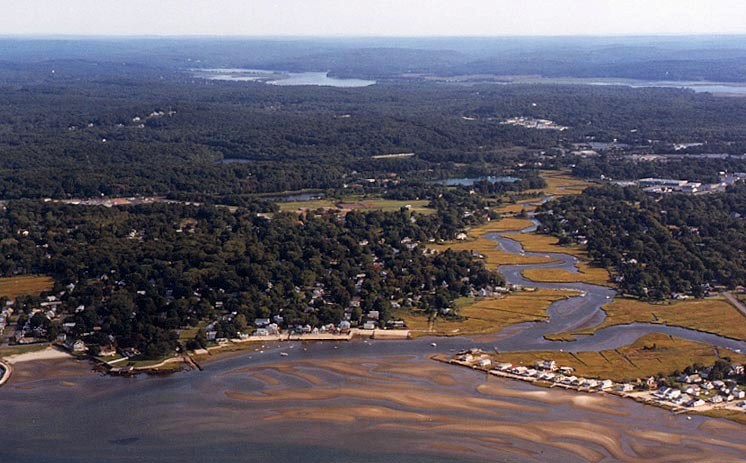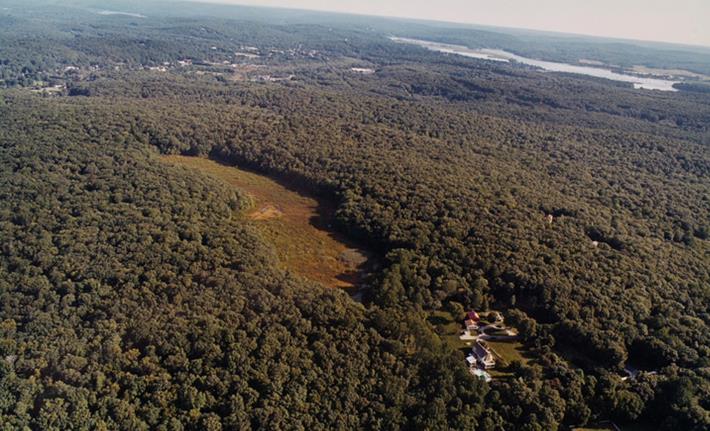This is Part II of our occasional series about The Preserve, the 1,000-acre forest in the Old Saybrook area that local residents, statewide organizations, and elected officials have been fighting to save for the last decade.
Please click here to read Part I, and stay tuned for future posts that will delve deeper into the cooperative effort to protect the land, the natural resources found on the property, next steps, and other aspects.

PART II
Wetlands Hearings and Expert Counsel: Recognizing the growing public opposition, Lehman submitted a new round of applications, applying for an Open Space Subdivision and wetlands permit. They presented this as a more environmentally friendly proposal to gain support. CFE, represented by attorney Charles Rothenberger, immediately intervened as a legal party alleging that developing the site would unreasonably and illegally destroy the unfragmented forest, high quality wetlands, streams and vernal pools, and the accompanying wildlife that uses them. CFE retained and presented several consultants and academic experts on wetlands ecology and geology to evaluate and testify in opposition to the developer’s proposal. Peter Patton and Geoffrey Hammerson from Wesleyan University testified about the soil and hydrology and the wildlife aspects of the site, respectively. George Logan and Sigrun Gadwa from REMA Consulting testified about other wetlands issues.
The strong science was backed by a compelling turnout. The hearings were packed with residents opposing the development. Of the 60 to 120 residents who turned out at each hearing, only one spoke in favor of the proposal.

Legal Victory: In a stunning 4-3 decision, the Old Saybrook Inland Wetlands and Watercourses Commission reversed its previous course and found that the development would likely have adverse impacts on the wetlands and denied the application. In making this dramatic turnaround, the wetlands commission relied heavily upon the testimony of the experts that CFE provided. The wetlands commission cited the testimony of Patton, Logan and Gadwa as the basis for their denial of the developer’s application.
Lehman appealed the decision to the Connecticut Superior Court and then the Appellate Court. CFE remained as a party in the case to defend our victory. CFE attorney Charles Rothenberger argued that the decision should be affirmed and the development should be denied based upon the evidence submitted by our experts. Both courts affirmed the wetlands commission’s decision and they, too, cited the expert evidence presented by CFE as a reasonable basis for the agency’s decision.

The Battle Continued: While the victory was powerful and inspiring, it did not, of course, guarantee the land would be preserved into the future. Indeed, Lehman still owned the property and still intended to develop it. With the declining economy, Lehman’s strategy changed from seeking to develop a golf course right away, to developing smaller housing parcels on the outskirts of the property and holding the rest of the property for an unspecified future development.
Opposition to these smaller developments, however, remained fierce, as they would have fragmented crucial habitats and paved the way (literally) for further developments. CFE and neighbors in Essex, the site of the proposed smaller development, intervened to oppose the developments. The neighbors appealed an initial approval of the revised plan, and CFE remained as a party in the case seeking to overturn the decision.
It was in this context that negotiations resumed and a conservation sale of the property was finally announced in July 2013. In light of that announcement, the final appeals were withdrawn. If all goes well, the legal battles will be at an end.

Working Together for Permanent Preservation: While a legal challenge was a necessary part of the strategy to protect the Preserve, and the development would have likely gone through if we hadn’t secured a decision blocking it, legal action alone was not sufficient to achieve permanent conservation. In the end, this battle is an illustration of how strong concerted effort by multiple stakeholders can be. The Alliance for Sound-area Planning, the Attorney General’s Office, DEEP, Trust for Public Land, The Nature Conservancy and Audubon Connecticut all played, and continue to play, critical roles. If we continue to work together as we have over the past decade, there is little doubt, at least in my mind, this and other land preservation stories will have happy, and complete, endings!
Posted by Roger Reynolds, legal director for CFE, and Laura McMillan, communications director for CFE

4 thoughts on “The Preserve: A Timeline of the Fight to Protect the 1,000-acre Forest (Part 2)”
Comments are closed.